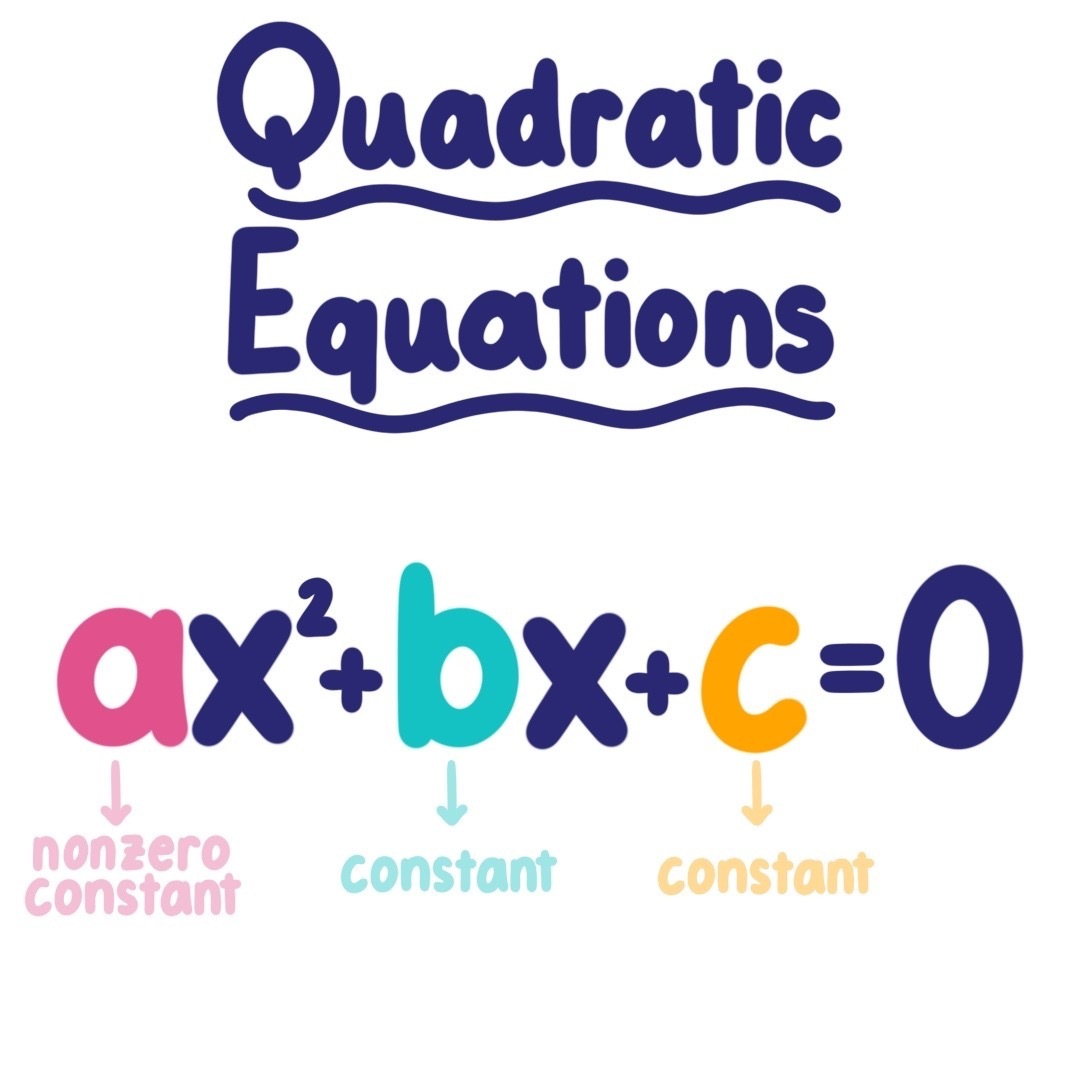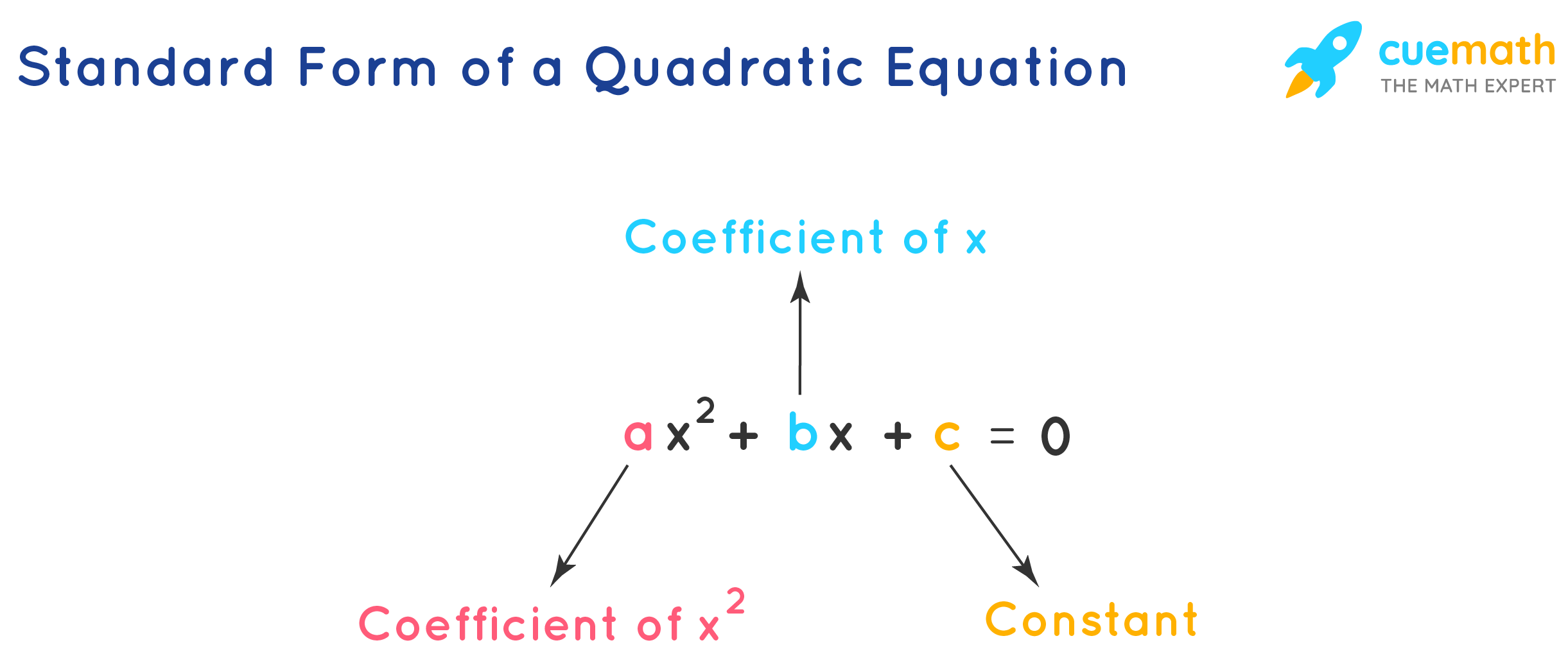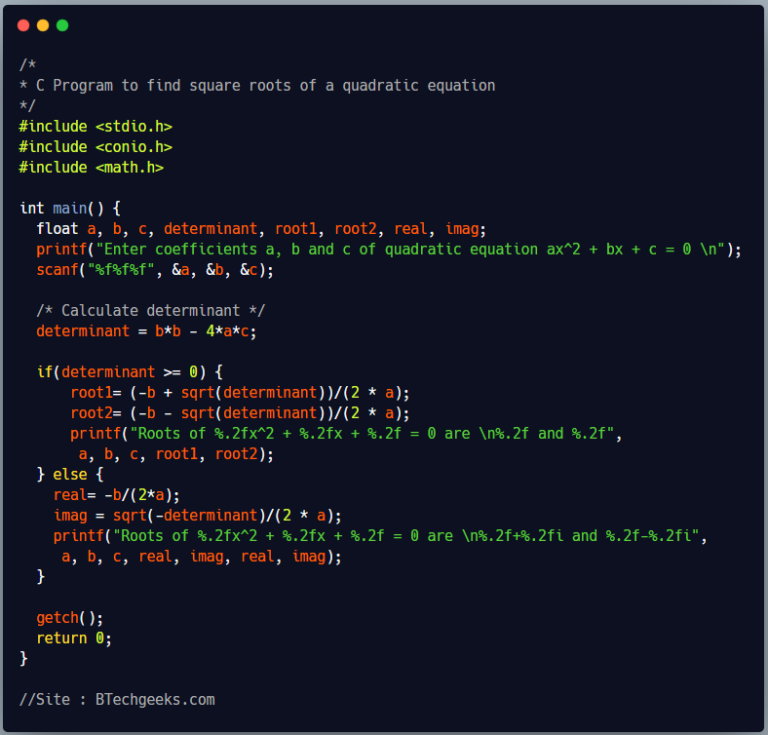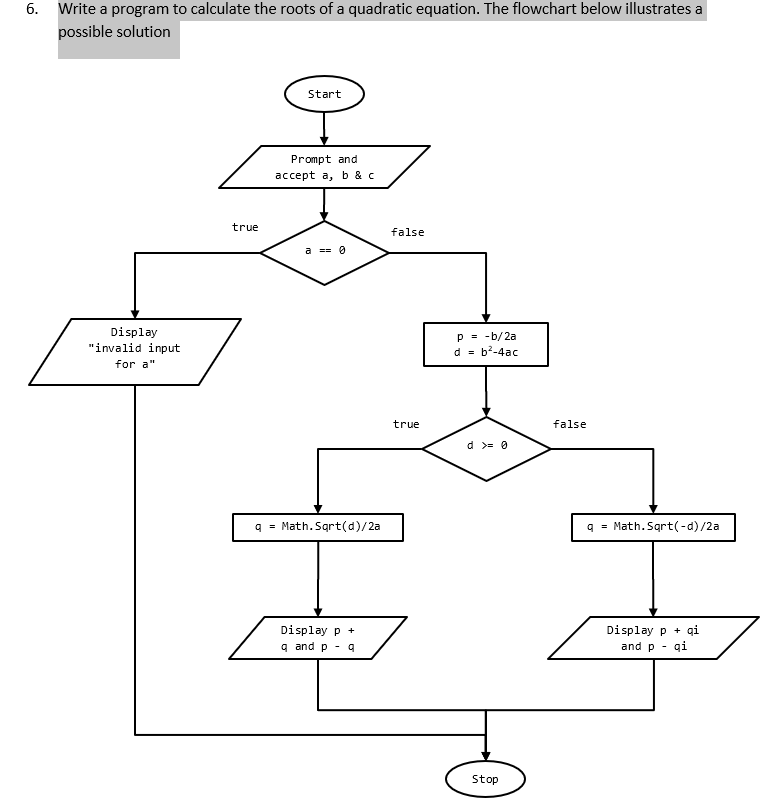
Quadratic Definition
This is a formula, so if you can get the right numbers, you plug them into the formula and calculate the answer (s). We always have to start with a quadratic in standard form: ax^2+bx+c=0. Making one up, 3x^2+2x-5=0, we see a=3, b=2, c=-5. I teach my students to start with the discriminant, b^2-4ac. Also, especially in the beginning, put the b.

Quadratic Equations Formulas, Methods, and Examples
Solve by using the Quadratic Formula: 2x2 + 9x − 5 = 0 2 x 2 + 9 x − 5 = 0. Solution: Step 1: Write the quadratic equation in standard form. Identify the a, b, c a, b, c values. This equation is in standard form. Step 2: Write the quadratic formula. Then substitute in the values of a, b, c a, b, c.
Quadratics Functions Concept Map
When we substitute a, b, and c into the Quadratic Formula and the radicand is negative, the quadratic equation will have imaginary or complex solutions. We will see this in the next example. Example 9.24. Solve by using the Quadratic Formula: 3 p 2 + 2 p + 9 = 0. 3 p 2 + 2 p + 9 = 0. Solution.

C Program to Find All Roots of Quadratic Equation BTech Geeks
How do you calculate a quadratic equation? To solve a quadratic equation, use the quadratic formula: x = (-b ± √ (b^2 - 4ac)) / (2a). What is the quadratic formula? The quadratic formula gives solutions to the quadratic equation ax^2+bx+c=0 and is written in the form of x = (-b ± √ (b^2 - 4ac)) / (2a) Does any quadratic equation have two solutions?

Quadratic Formula Equation & Examples Curvebreakers
The standard form of a quadratic equation is: ax 2 + bx + c = 0, where a, b and c are real numbers and a != 0 The term b 2; - 4ac is known as the discriminant of a quadratic equation. It tells the nature of the roots. If the discriminant is greater than 0, the roots are real and different.

Quadratic Equation Graph Standard Form Examples
A quadratic equation is an equation of the second degree, meaning it contains at least one term that is squared. The standard form of the quadratic equation is ax² + bx + c = 0 where a, b, and c are real and a !=0, x is an unknown variable. The nature of roots is determined by the discriminant.
draw a flowchart to solve a quadratic equation indianweddingoutfitssistersanarkali
The solutions to the quadratic equation, as provided by the Quadratic Formula, are the x-intercepts of the corresponding graphed parabola. How? Well, when y = 0, you're on the x-axis. The x-intercepts of the graph are where the parabola crosses the x-axis. You're applying the Quadratic Formula to the equation ax 2 + bx + c = y, where y is set.

C Program To Compute Roots Of Quadratic Equation Mobile Legends
Explore the Quadratic Equation. A Quadratic Equation. ( a, b, and c can have any value, except that a can't be 0.) Try changing a, b and c to see what the graph looks like. Also see the "roots" (the solutions to the equation). Then read more about the Quadratic Equation.

C Program To Find Roots Of Quadratic Equation Using Switch Tessshebaylo
The quadratic equation is represented by ax + bx + c ,, and are real numbers and constants, and a ≠ 0. The root of the quadratic equations is a value of that satisfies the equation. The Discriminant is the quantity that is used to determine the nature of roots: Discriminant (D) = b. Based on the nature of the roots, we can use the given.

The Quadratic Formula. Its Origin and Application IntoMath
This online calculator is a quadratic equation solver that will solve a second-order polynomial equation such as ax 2 + bx + c = 0 for x, where a ≠ 0, using the quadratic formula. The calculator solution will show work using the quadratic formula to solve the entered equation for real and complex roots.
Algebra I Vazquez October 2013
The quadratic formula helps us solve any quadratic equation. First, we bring the equation to the form ax²+bx+c=0, where a, b, and c are coefficients. Then, we plug these coefficients in the formula: (-b±√ (b²-4ac))/ (2a) . See examples of using the formula to solve a variety of equations. Created by Sal Khan. Questions Tips & Thanks

C Program To Find Quadratic Equation truezfil
A quadratic equation is an algebraic equation of the second degree in x. The quadratic equation in its standard form is ax 2 + bx + c = 0, where a and b are the coefficients, x is the variable, and c is the constant term. The important condition for an equation to be a quadratic equation is the coefficient of x 2 is a non-zero term (a ≠ 0). For writing a quadratic equation in standard form.

Formula Quadratic Equation Examples pametno
. Then we plug a , b , and c into the formula: x = − 4 ± 16 − 4 ⋅ 1 ⋅ ( − 21) 2

C Program Quadratic equation YouTube
For a quadratic equation ax2+bx+c = 0 (where a, b and c are coefficients), it's roots is given by following the formula. Formula to Find Roots of Quadratic Equation The term b 2 -4ac is known as the discriminant of a quadratic equation. The discriminant tells the nature of the roots.

Quartic Equation Solver C++? 5 Most Correct Answers
[Why is this a quadratic equation?] This is a product of two expressions that is equal to zero. Note that any x value that makes either ( x − 1) or ( x + 3) zero, will make their product zero. ( x − 1) ( x + 3) = 0 ↙ ↘ x − 1 = 0 x + 3 = 0 x = 1 x = − 3
Quadratic Formula IGCSE at Mathematics Realm
In algebra, a quadratic equation (from Latin quadratus ' square ') is any equation that can be rearranged in standard form as [1] where x represents an unknown value, and a, b, and c represent known numbers, where a ≠ 0. (If a = 0 and b ≠ 0 then the equation is linear, not quadratic.)